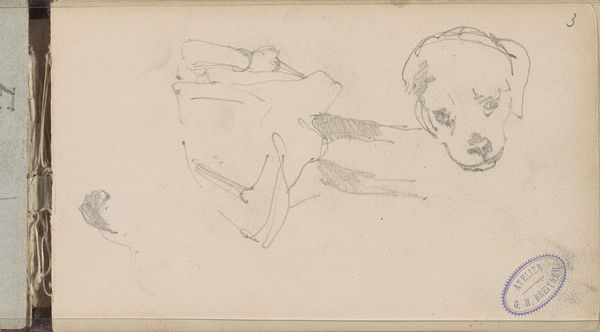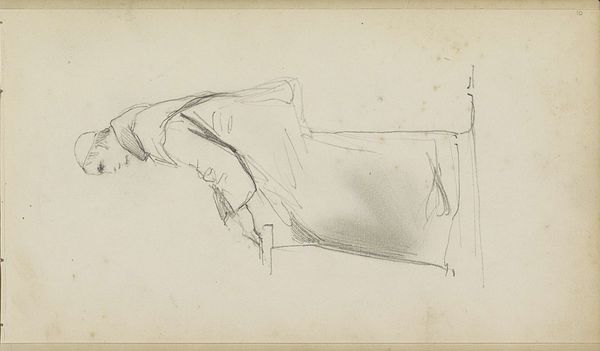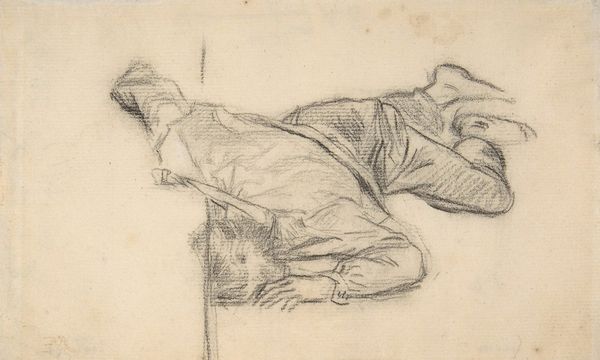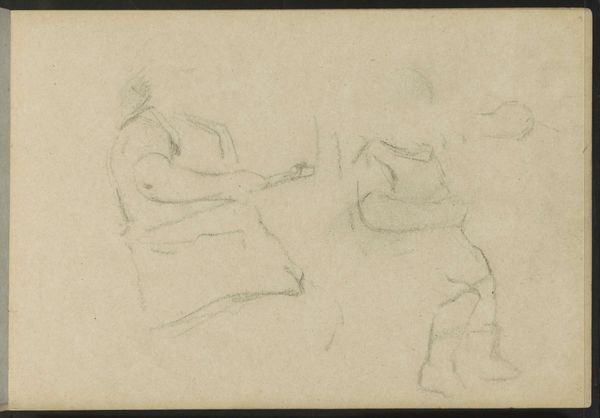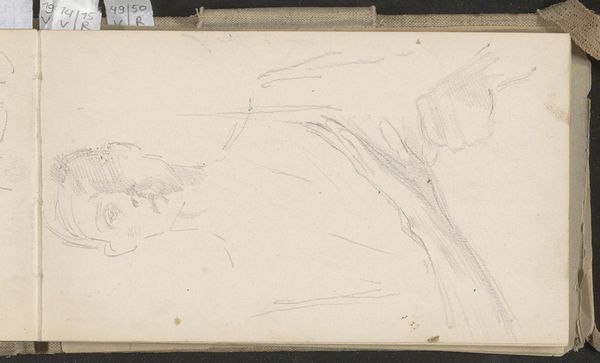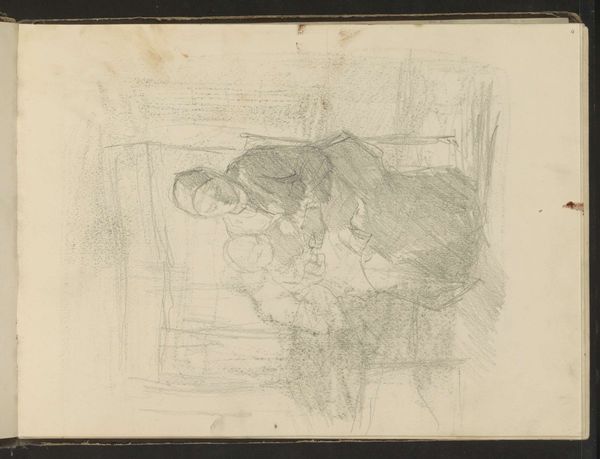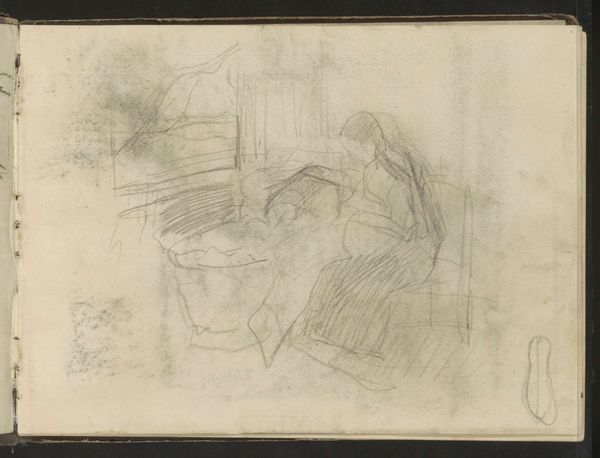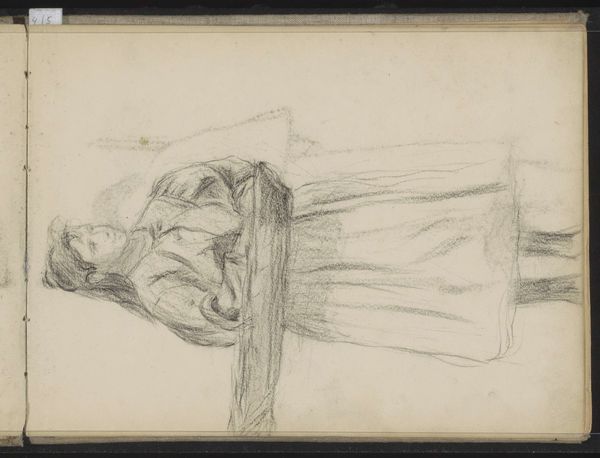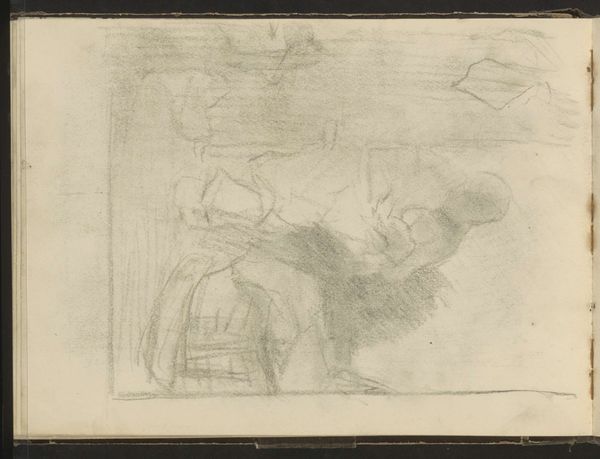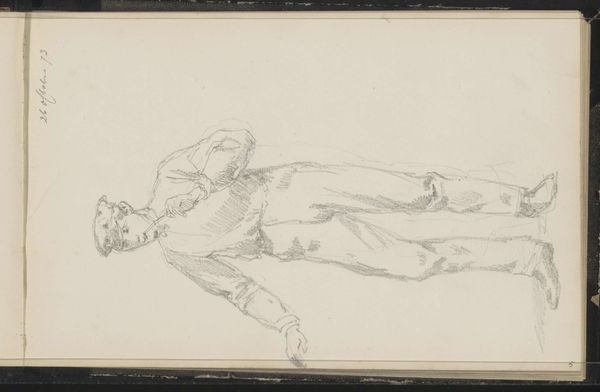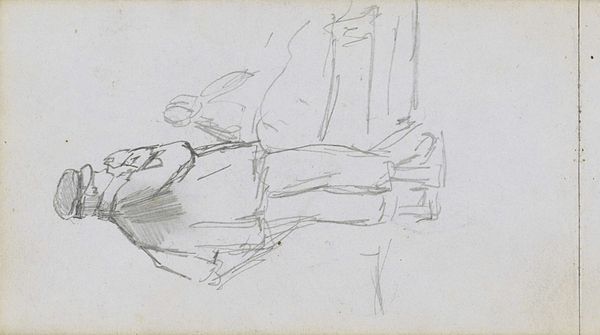
drawing, paper, pencil
#
drawing
#
pencil sketch
#
figuration
#
paper
#
pencil
#
genre-painting
#
realism
Copyright: Rijks Museum: Open Domain
Curator: Here we have Johannes Bosboom’s “Organ-Playing Monk,” a pencil drawing on paper, made sometime between 1850 and 1891. It's currently housed in the Rijksmuseum. What’s your first impression? Editor: Well, the delicacy of the lines really strikes me. It’s almost as if the monk and his organ are fading into the background, perhaps reflecting a disappearing religious order, or just a quiet, reflective moment in time. Curator: I think you’ve hit on something important. Bosboom often depicted church interiors, and the figure of the monk adds a human element to these spaces. How does that impact your reading of the artwork? Editor: It personalizes it, definitely. The focus shifts from grand architecture to individual devotion. Is Bosboom commenting on the role of the Church or exploring the spirituality of the individual? Is it accessible or elitist? Who is this art made for? Curator: It's likely both, I believe. Religious institutions throughout time played complicated roles of dominance. The play of light and shadow certainly heightens the emotional impact of the scene, perhaps alluding to the tension between faith and doubt, a subject often found throughout art of this period. Editor: Absolutely. It reminds me how class and privilege dictated whose piety was valued, whose was visible, and who had the resources for this type of personal devotion. I’m also wondering about the conditions under which this artwork was created. Was this a commission or a study? Curator: It’s believed that the piece was a preliminary sketch for larger works. Bosboom, despite being known for interiors and religious themes, operated in a Dutch art world increasingly concerned with realism and scenes of everyday life. How does that context shape the monk’s depiction for you? Editor: Knowing it’s a study shifts my perception. It becomes less about the finished artwork and more about process, about Bosboom figuring out his composition and light. Maybe the apparent delicacy is less intentional statement and more a product of that creative process? Curator: A very good point. This also opens it to a larger public; through sketches we learn how art history truly comes to life through the hand of the artist. Editor: Right. Well, it has me rethinking how these smaller, more intimate pieces offer unique access to historical contexts, revealing both individual expression and broader cultural forces. Curator: Agreed. This unassuming drawing provides layers to consider when discussing art's role within social and cultural history.
Comments
No comments
Be the first to comment and join the conversation on the ultimate creative platform.
